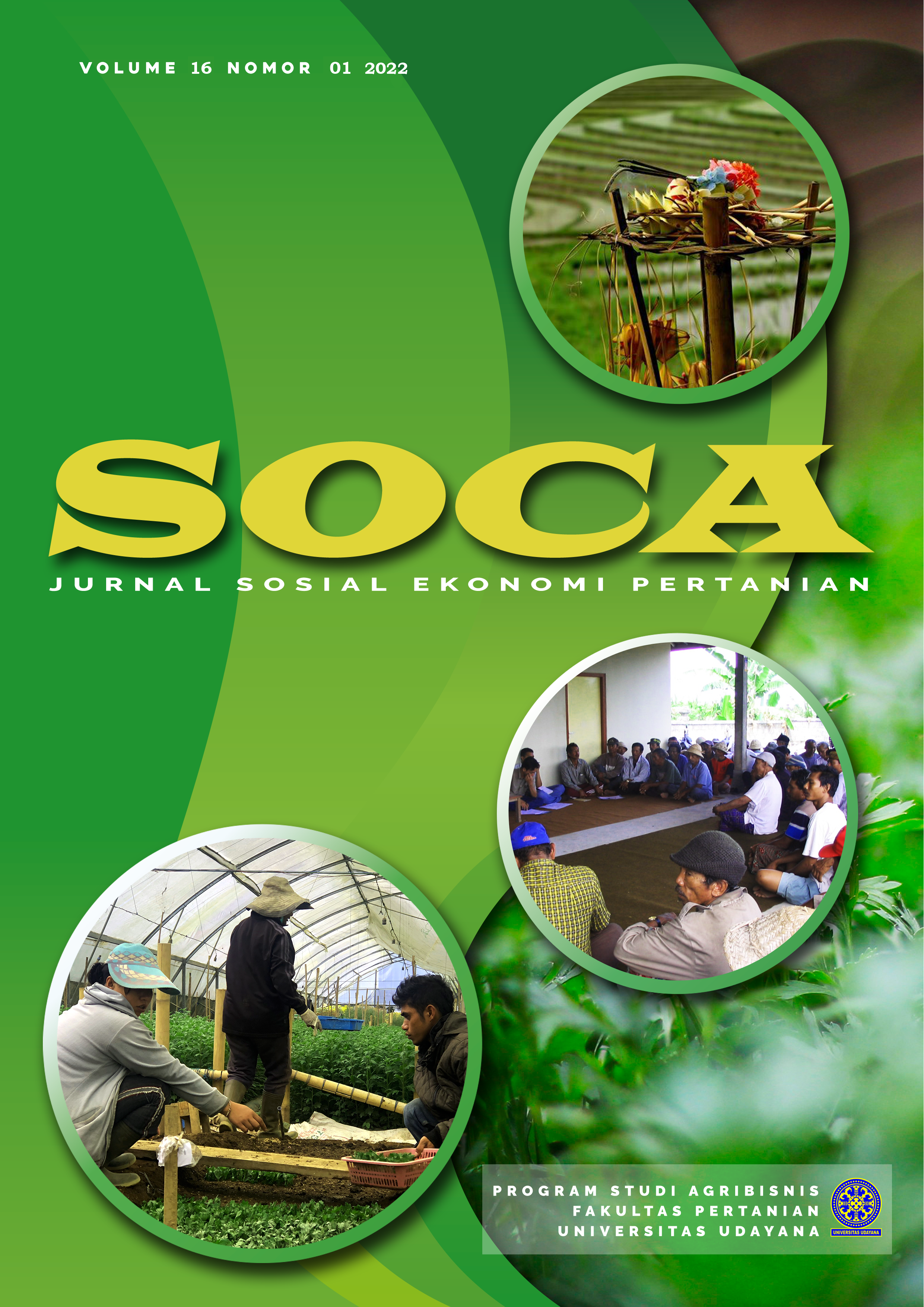Functional Shifting From Agricultural Land Into Non-Agriculture
Abstract
The main problem in this research was the conversion of agricultural land into non-agricultural land in the regional spatial plan. The occurrence of agricultural land shifting involved the government, land owners, investors and the community. The aims of this research was to analyze factors, economic, social, land conditions and the government as the reason of the conversion of agricultural land into non-agriculture. The research was conducted in Denbantas Village, Tabanan Regency, Bali, with the consideration that the village was shifting the function of agricultural land. The research sample was determined by proportional random sampling with total 148 respondents. The data were analyzed quantitatively and qualitatively, the research results found that the dominant factors of agricultural land shifting were the need for housing, public ignorance of the land function, there was no land as an alternative to build a residence, and the government lacked socialization about land functions according to the regional spatial plan. The research on the causes of conversion of agricultural land into non-agricultural need to be conducted to anticipate land conversion did not occur sustainably
Downloads
References
Affan, F. M. (2014) ‘Analisis Perubahan Penggunaan Lahan Untuk Permukiman dan Industri Dengan Menggunakan Sistem Informasi Geografis (SIG)’, Jurnal Ilmiah Pendidikan Geografi, 2(1), pp. 49–60.
Dinaryanti, N. (2014) ‘Faktor-Faktor yang Mempengaruhi Alih Fungsi Lahan Pertanian di Daerah Sepanjang Irigasi Bendung Colo Kabupaten Sukoharjo’, Undergraduate thesis, Fakultas Ekonomika dan Bisnis. Universitas Diponegoro, pp. 1–73.
Fattah, A. N. and Purnomo, E. P. (2018) ‘Analisis Kebijakan Alih Fungsi Lahan Pertanian Ke Non – Pertanian Di Kabupaten Klaten Tahun 2013-2016 (Studi Kasus Kecamatan Ceper Kabupaten Klaten)’, Jispo (Jurnal Ilmu Sosial dan Ilmu Politik), 8(1), pp. 113–140.
He, C., Huang, Z. and Wang, R. (2014) ‘Land use change and economic growth in urban China: A structural equation analysis’, Urban Studies, 51(13), pp. 2880–2898. doi: 10.1177/0042098013513649.
Khaerani, R., Sitorus, S. R. P. and Rusdiana, O. (2018) ‘Analisis Penyimpangan Penggunaan Lahan Berdasarkan Rencana Tata Ruang Wilayah Kabupaten Sumedang’, Tataloka, 20(4), p. 399. doi: 10.14710/tataloka.20.4.399-409.
Lia, R. S., Satmoko, S. and Prayoga, K. (2021) ‘Socio-Economic Impact of Agropolitan Area Development Among Chrysanthemum Farmer’, SOCA: Jurnal Sosial Ekonomi Pertanian, 15(3), pp. 505–517.
Nurul Hidayati, H. and A. Kinseng, R. (2015) ‘Konversi Lahan Pertanian Dan Sikap Petani Di Desa Cihideung Ilir Kabupaten Bogor’, Sodality: Jurnal Sosiologi Pedesaan, 1(3), pp. 222–230. doi: 10.22500/sodality.v1i3.9405.
Pramudiana, I. D. (2018) ‘Dampak Konversi Lahan Petanian Terhadap Kondisi Sosial Ekonomi Petani Di Kecamatan Tikung Kabupaten Lamongan’, Asketik, 1(2), pp. 129–136. doi: 10.30762/ask.v1i2.525.
Purwanto and Hindrayani, A. (2020) ‘The impact of forest land use change to intensive agricultural system on the economic efficiency of nitrogen utilization’, IOP Conference Series: Earth and Environmental Science, 485(1), pp. 0–9. doi: 10.1088/1755-1315/485/1/012064.
Septiani, R. (2019) ‘Dampak Konversi Lahan Pertanian Menjadi Lahan Perkebunan Desa Arasoe Bone’, Jurnal Kajian Sosial dan Budaya: Tebar …, 3(3), pp. 92–100. Available at: http://ejournal.tebarscience.com/index.php/JKSB/article/view/59.
Siregar, A. P., Tarsilohadi, E. R. and Oktaviana, N. (2021) ‘griculture, Forestry and Fisheries The Transformation of ASectors in the Indonesian Economy’, SOCA: Jurnal Sosial Ekonomi Pertanian, 15(3), pp. 564–575.
Ustriyana, I. N. G. et al. (2021) ‘The Sustainability Prospective of Irrigation System Management In Bali and Outside of Bali’, SOCA: Jurnal Sosial Ekonomi Pertanian, 15(3), pp. 622–640.
Wardi, I. et al. (2016) ‘Dampak Pertumbuhan Penduduk Terhadap Lingkungan Dan Budaya Subak : Studi Kasus Di Kabupaten Tabanan Provinsi Bali’, Bumi Lestari, 14(2), pp. 110–124. doi: 10.24843/blje.
Ye, Q. et al. (2004) ‘Geospatial-temporal analysis of land-use changes in the Yellow River Delta during the last 40 years’, Science in China, Series D: Earth Sciences, 47(11), pp. 1008–1024. doi: 10.1360/03yd0151.
Zahrotunisa, S. (2017) ‘Prediksi Spasial Perkembangan Lahan Terbangun Melalui Pemanfaatan Citra Landsat Multitemporal di Kota Bogor’, Jurnal Online Informatika, 2(1), p. 30. doi: 10.15575/join.v2i1.88.













